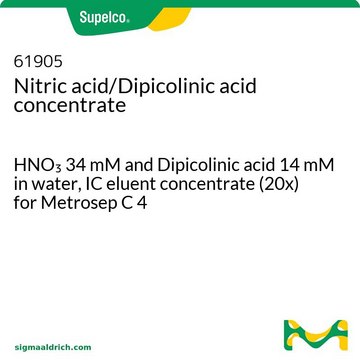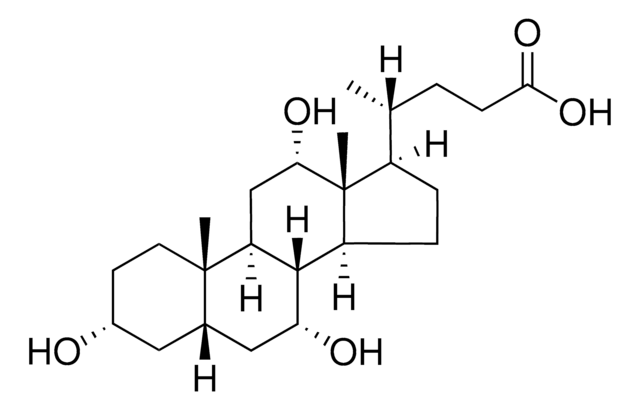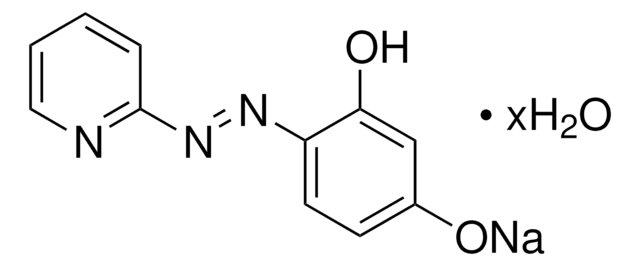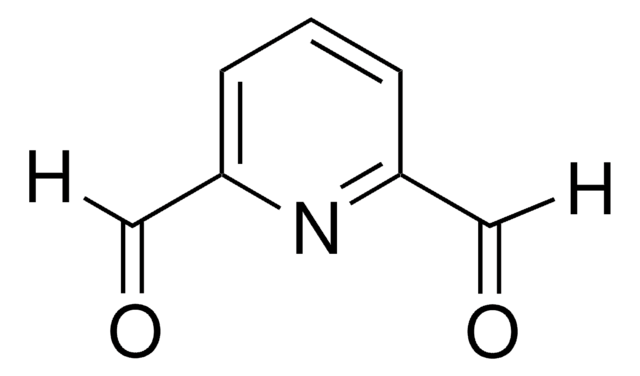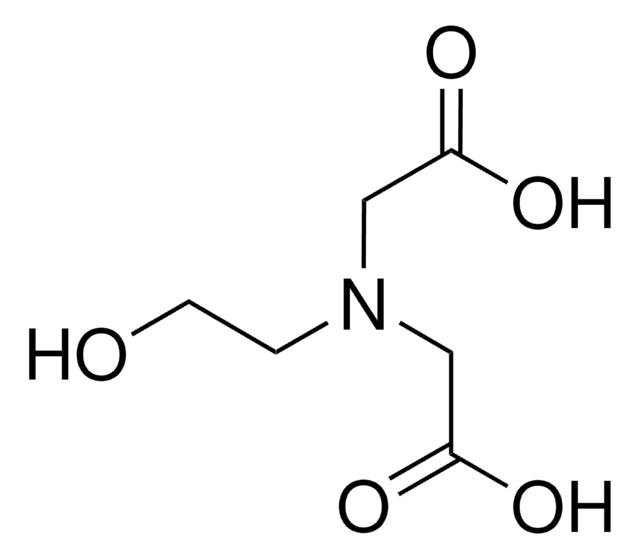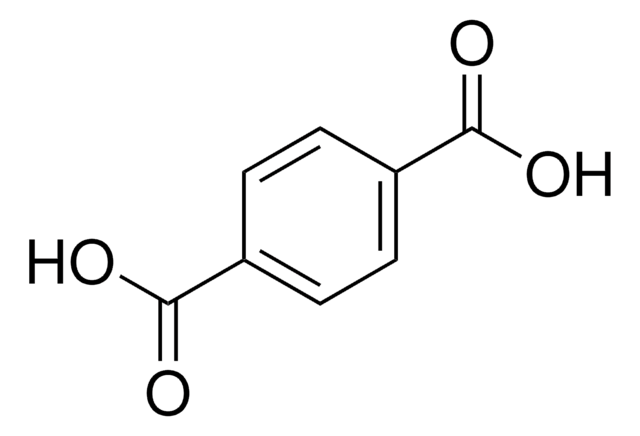8.00614
Pyridine-2,6-dicarboxylic acid
for synthesis
Sinónimos:
Pyridine-2,6-dicarboxylic acid, Dipicolinic acid
About This Item
Productos recomendados
presión de vapor
<0.01 hPa ( 20 °C)
Nivel de calidad
Ensayo
≥98.0% (acidimetric)
Formulario
powder
temp. de autoignición
620 °C
potencia
10500 mg/kg LD50, oral (Rat)
pH
2.0 (20 °C, 5 g/L in H2O)
mp
248-255 °C
solubilidad
5 g/L
densidad aparente
700 kg/m3
temp. de almacenamiento
2-30°C
cadena SMILES
n1c(cccc1C(=O)O)C(=O)O
InChI
1S/C7H5NO4/c9-6(10)4-2-1-3-5(8-4)7(11)12/h1-3H,(H,9,10)(H,11,12)
Clave InChI
WJJMNDUMQPNECX-UHFFFAOYSA-N
Categorías relacionadas
Aplicación
- Adsorption of Cu(II) ions from aqueous solution using pyridine-2,6-dicarboxylic acid crosslinked chitosan as a green biopolymer adsorbent.: This research explores the efficiency of a green biopolymer, specifically chitosan crosslinked with pyridine-2,6-dicarboxylic acid, for the adsorption of copper ions from aqueous solutions, highlighting its potential for environmental cleanup and water treatment (Bisiriyu et al., 2020).
- Crystal structure of nonadentate tricompartmental ligand derived from pyridine-2,6-dicarboxylic acid: Spectroscopic, electrochemical and thermal investigations of its transition metal(II) complexes.: This article details the structural and functional characteristics of a complex ligand derived from pyridine-2,6-dicarboxylic acid, which could inform further research in coordination chemistry and material science (Vadavi et al., 2011).
- Pyridine-substituted oligopeptides as scaffolds for the assembly of multimetallic complexes: variation of chain length.: This research explores the use of pyridine-2,6-dicarboxylic acid in the construction of oligopeptide scaffolds for multimetallic complexes, relevant to the fields of molecular engineering and nanotechnology (Ohr et al., 2005).
- Comprehensive study of the luminescent properties and lifetimes of Eu(3+) and Tb(3+) chelated with various ligands in aqueous solutions: influence of the synergic agent, the surfactant and the energy level of the ligand triplet.: This study provides a thorough analysis of the luminescent behavior of lanthanide complexes with pyridine-2,6-dicarboxylic acid derivatives, significant for developing advanced photonic and electronic materials (Arnaud et al., 2003).
Nota de análisis
Identity (IR): conforms
Palabra de señalización
Danger
Frases de peligro
Consejos de prudencia
Clasificaciones de peligro
Eye Dam. 1 - Skin Corr. 1B - STOT SE 3
Órganos de actuación
Respiratory system
Código de clase de almacenamiento
8A - Combustible, corrosive hazardous materials
Clase de riesgo para el agua (WGK)
WGK 3
Punto de inflamabilidad (°F)
370.4 °F - closed cup
Punto de inflamabilidad (°C)
188 °C - closed cup
Certificados de análisis (COA)
Busque Certificados de análisis (COA) introduciendo el número de lote del producto. Los números de lote se encuentran en la etiqueta del producto después de las palabras «Lot» o «Batch»
¿Ya tiene este producto?
Encuentre la documentación para los productos que ha comprado recientemente en la Biblioteca de documentos.
Los clientes también vieron
Nuestro equipo de científicos tiene experiencia en todas las áreas de investigación: Ciencias de la vida, Ciencia de los materiales, Síntesis química, Cromatografía, Analítica y muchas otras.
Póngase en contacto con el Servicio técnico




